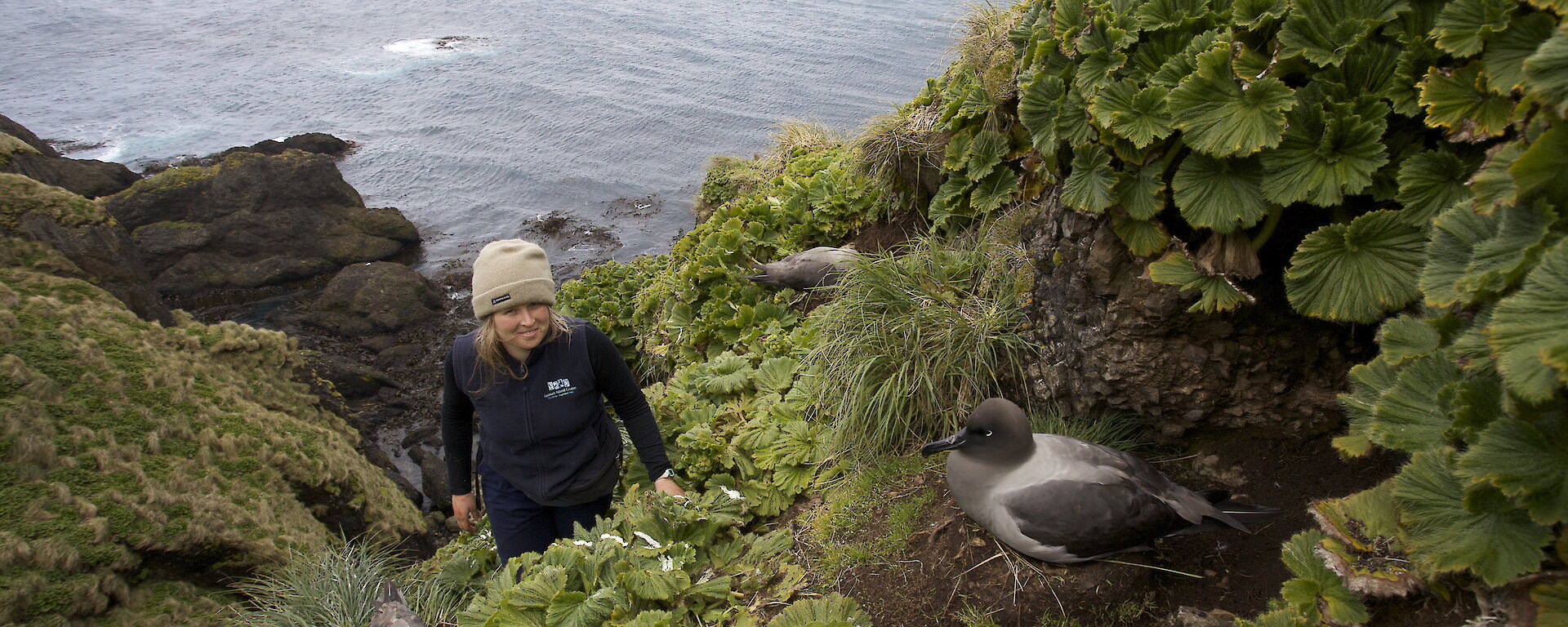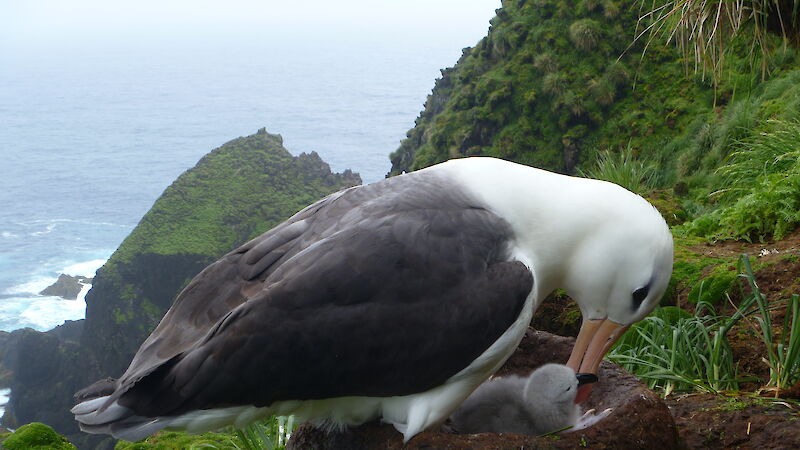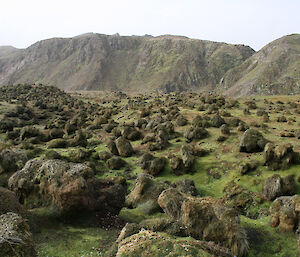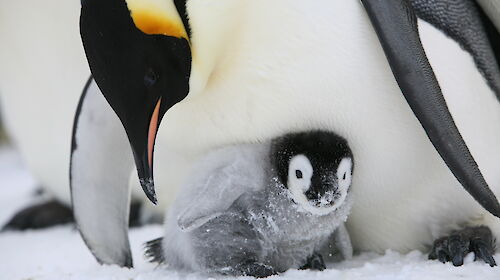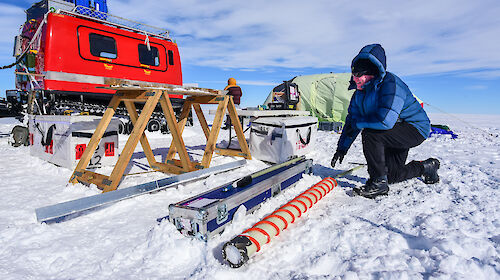Prior to their eradication, high rabbit numbers on sub-Antarctic Macquarie Island was linked to a reduced likelihood of breeding success for some albatross species.
Since the success of the joint Australian and Tasmanian Government Macquarie Island Pest Eradication Program in 2014, however, the rapid recovery of vegetation on albatross breeding colony slopes has resulted in a more positive outlook for the future of these endangered or threatened seabird populations.
The research, published today in Scientific Reports, will help inform mitigation of the negative effects of invasive species on other native island populations and demonstrates the value of eradication efforts.
Led by Dr Jaimie Cleeland from the Australian Antarctic Division and the Institute for Marine and Antarctic Studies, the research found that when rabbit numbers were high, the breeding probability of light-mantled, grey-headed and black-browed albatrosses, decreased by between 33 and 76 per cent.
Rabbit grazing directly affected seabird nest site habitat and microclimate, with habitat reduced to dead tussocks, bare ground and mud, and offering limited protection from predators or adverse weather.
Rabbit burrowing also reduced soil stability and enhanced natural erosion, leading to further large-scale habitat degradation.
“When adult albatrosses return to the colony and encounter poor nesting conditions, they may either invest in breeding in sub-standard conditions or skip breeding until nest site conditions improve,” Dr Cleeland said.
“For Macquarie Island albatrosses, reduced breeding probability during periods of severe rabbit damage potentially reflects their adaptive capacity – the energetic costs of breeding are avoided when the likelihood of reproductive success is low.”
Black-browed albatross fared the worst of the three species, being additionally affected by extreme rainfall in the absence of protective vegetation.
“On Macquarie Island there has been an increase in the frequency and magnitude of heavy rain, and increases in average daily wind speeds,” Dr Cleeland said.
“For black-browed albatross, this extreme weather may have a greater influence on raising chicks, because their nest sites are more exposed to extreme storm events and at greater risk of waterlogging.”
Dr Cleeland said understanding the effects of invasive species, together with that of a changing climate, were crucial to mitigating impacts on native species. However, few studies have been able to address the effects of both because of a lack of long-term data on invasive species populations.
Fortunately, Dr Cleeland had access to 20 years of albatross capture-mark-recapture data (collected by the Tasmanian Department of Primary Industries, Parks, Water and Environment –DPIPWE –between 1995 and 2014), as rabbit populations increased after the eradication of cats and the effectiveness of the Myxoma virus declined. She also used monthly estimates of island-wide rabbit density from DPIPWE and Australian Antarctic Division research, and weather event records from the Bureau of Meteorology.
The eradication of rabbits from Macquarie Island has led to a rapid recovery of vegetation on albatross breeding colony slopes, with early improvements in the birds’ reproductive ability, and lessons for future conservation measures.
“Understanding how breeding site conditions are linked to breeding probability and success is important for the conservation of wide-ranging species like albatrosses,” Dr Cleeland said.
“It shows that active animal management, such as removing invasive species, can have a positive effect on vulnerable populations.
“By gaining a greater insight into the vulnerability or resilience of each species to changes in ecosystem state, we can reduce the likelihood of negative and unintended consequences of future applied conservation management.”
This research was supported by an Australian Antarctic Science Program grant to DPIPWE in support of their long-term Albatross and Giant Petrel Monitoring Program.

